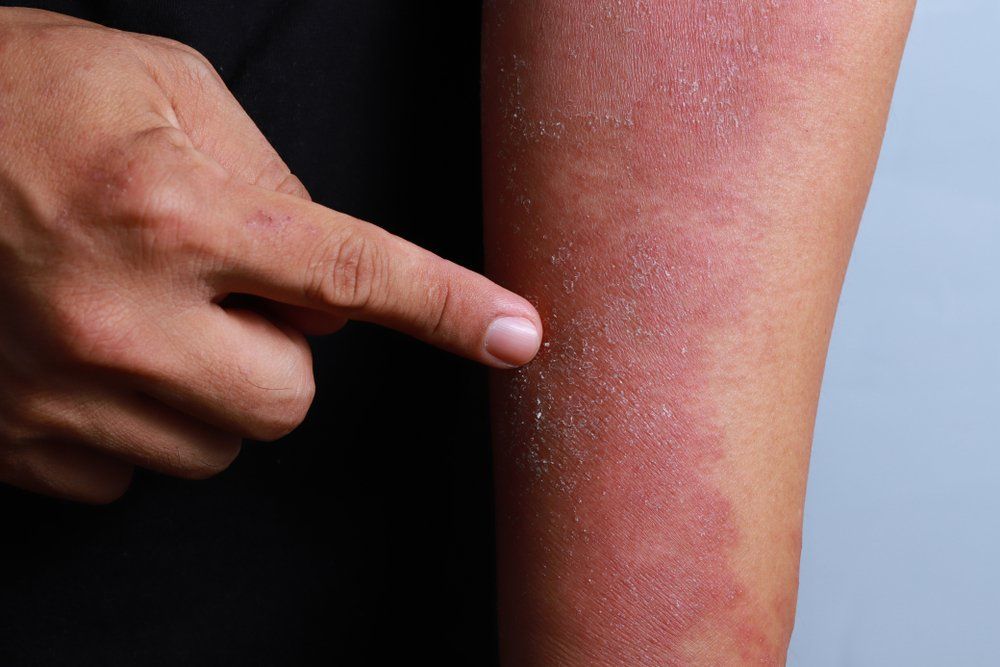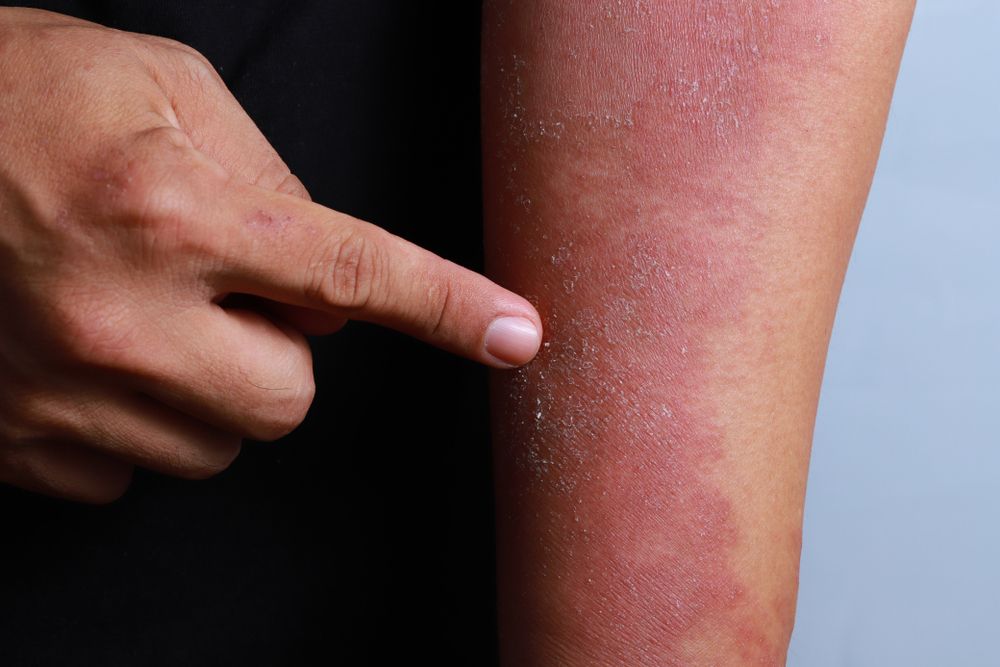- Acne
- Actinic Keratosis
- Aesthetics
- Alopecia
- Atopic Dermatitis
- Buy-and-Bill
- COVID-19
- Case-Based Roundtable
- Chronic Hand Eczema
- Chronic Spontaneous Urticaria
- Drug Watch
- Eczema
- General Dermatology
- Hidradenitis Suppurativa
- Melasma
- NP and PA
- Pediatric Dermatology
- Pigmentary Disorders
- Practice Management
- Precision Medicine and Biologics
- Prurigo Nodularis
- Psoriasis
- Psoriatic Arthritis
- Rare Disease
- Rosacea
- Skin Cancer
- Vitiligo
- Wound Care
Article
Oatmeal soothes, relieves, and inhibits viruses
Author(s):
Good for more than a morning meal, oatmeal soothes angry skin, relieves itching, and even has an antimicrobial effect.

Reena Rupani, M.D.Have you ever loved the taste of something so much that you wanted to justâ¦.soak in it? That vintage Barolo 1996, or maybe your grandmotherâs slow-cooked-for-days basil marinara, or even perhaps a hand-churned butter pecan ice cream, evoking memories of tall grass and porch swings that never were (née concrete-jungle child)?
READ: The surprising benefits of coconut oil in skin therapy
Well, if oatmealâs warm internal hug has ever inspired thoughts of pore-soaking exhilaration, read on! Many of our patients with chronic inflammatory or pruritic skin disorders require guidance on skincare regimens, and simple colloidal oatmeal can be a soothing component.
Colloidal oatmeal (Avena sativa) is the product of finely grinding the whole oat grain (âgroatâ), until the majority of particles measure less than 75 micrometers in size. Steel cut to rolled to instant to colloidalâitâs a degree of processing from least to most, respectively.
Oats have long been used as medicinal aids in baths and applied compounds. Oats are approved by the German Commission E and are also covered by the FDA OTC skin protectant monograph in the United States.1,2,3
NEXT: What makes it so soothing?
What makes it so soothing?
Primary components include omega 3 and 6 fatty acids, polar lipids, and beta-glucans, which combine with water or emollients to form a gelatinous hydrocolloid, known as mucilage. Mucilage generates a hydrating protective barrier and decreases transepidermal water loss when applied to the skin.4 Other mucilage-containing herbs include heartsease (Viola tricolor), marshmallow (Althea officinalis), English plantain (Plantago lanceolata), fenugreek (Trigonella foenum-gaecum), mullein (Verbascum Thapsus), slippery elm (Ulmus fulva), and flax (Linum usitatissimum) (Shenefelt 2014).
ALSO READ: Honey's use in skin therapy
Oatmeal contains additional components that cleanse and protect irritated skin, such as saponins for cleaning and normalizing skin pH, antioxidants such as vitamins A, B, and E, and polysaccharides to maintain barrier integrity.5
In 2010, Rino and colleagues highlighted a nitrogen-containing phenolic compound called avenanthramide, specific to oats, which directly inhibits nuclear factor kappa-beta (NF-kb).6 The downstream effect is to decrease the transcription of pro-inflammatory cytokines and exert additional anti-inflammatory benefits, such as reduced neutrophil chemotaxis and prostaglandin synthesis.7,8,9 Further molecular analysis has also confirmed that avenanthramides inhibit IL-8 release in a dose-dependent manner.10 Bottom line? It is very soothing.
NEXT: Aid for AD
Aid for AD
Oatmeal is best known for use in atopic dermatitisâthe ceaseless itch accompanied by rash. Good skincare practices are part and parcel of the care process, helping to lessen itch and promote healing when antihistamines fail and steroids alone are insufficient.
INTERESTING: Skin barrier benefits of sunflower seed oil
Running a warm bath, adding 10cc of powdered colloidal oatmeal, and having a 15-20 minute soak should be a twice-weekly component of the therapeutic regimen. Not only does this practice aid barrier repair, but it also eliminates the need for additional soap (due to oatmealâs natural saponins), thereby satisfying dermatologistsâ typical advice to âsoap lessâ in atopic care. A recent study analyzed four extracts of colloidal oats both at the benchtop and the bedside, with the overall finding that pro-inflammatory cytokines decreased in vitro, and study subjects showed significant clinical improvements in skin dryness, scaling, roughness, and itch intensity.10
Antimicrobial benefits and more
Lesser-known merits include oatmealâs antimicrobial propertiesâspecifically, oatmeal extract may confer an antiviral benefit, possibly due to inhibitory effects on eicosanoid formation, expression of cytosolic phospholipase A2 (PLA2), and arachidonic acid mobilization in human keratinocytes.11
In one trial, patients with molluscum contagiosum were successfully treated with a combination zinc oxide and colloidal oatmeal cream.12
RECOMMENDED: The good, the bad, the ugly of alternative therapies
Could we then suggest oatmeal therapy for our patients with stubborn cold sores? Not so fastâOatmeal is a high arginine food, which is the amino acid most used by herpes simplex viral particles for replication (as opposed to lysine, which limits replication and thereby has therapeutic potential).
Another application might include treatment for patients on multiple tyrosine kinase inhibitors and epidermal growth factor receptor inhibitors (such as cetuximab, erlotinib, panitumumab, sorafenib) who experience dose-limiting acneiform eruptions. A study by Alexandrescu, et al, demonstrated partial to complete response in all assessable patients, thereby suggesting an exciting potential resource for mitigating a common and difficult medication side effect, and increasing adherence to antineoplastic therapy.13
NEXT: Adverse effects
Adverse effects
To round out the discussion, what of potential adverse effects from oatmeal itself? Although allergic reactions to oatmeal-containing products are clinically rare, one study demonstrated a higher-than-expected sensitivity to oats in allergy testing among atopic children, possibly due to repeated applications on an impaired epidermal barrier.14
READâTea tree oil: What can it do for your patients
Should followers of a gluten-free lifestyle be concerned (BROWâthe major gluten-containing grains including barley, rye, cross-contaminated oats, and wheat)? Science says no: The gluten molecule is too large to traverse the epidermal barrier, so unless you slurp while you soak, no worries to be had.
DIY soothing
Oatmeal is commercially available in a variety of formulations: Cleansers, bath additives, emollients, sunscreens, and dry shampoos. An at-home approach for DIY-ers: Take a cup of steel-cut oats, run through a very fine grinder 6 times (coffee or spice will do), and then either add to the bath or mix into your favorite emollient.
References:
1. Bisset, N. G., and M. Wichtl. "Herbal Drugs and Phytopharmaceuticals. A Handbook for Practice on a Scientific Basis, Med. Pharm." (2001): 167-169.
2. Fleming, Thomas. PDR for herbal medicines. No. Ed. 2. Medical Economics Company, 2000.
3. McGuffin, Michael, et al. "Botanical Safety Handbook. American Herbal Products Association." (1997).
4. Kurtz ES, Wallo W. Colloidal oatmeal: history, chemistry and clinical properties. J Drugs Dermatol. 2007;6(2):167-70.
5. Baumann, Leslie, Heather Woolery-Lloyd, and Adam Friedman. "" Natural" ingredients in cosmetic dermatology." Journal of drugs in dermatology: JDD 8.6 Suppl (2009): s5-9.
6. Cerio, Rino, et al. "Mechanism of action and clinical benefits of colloidal oatmeal for dermatologic practice." Journal of drugs in dermatology: JDD 9.9 (2010): 1116-1120.
7. Guo W, Wise ML, Collins FW, Meydani M. Avenanthramides, polyphenols from oats, inhibit IL-1beta-induced NF-kappaB activation in endothelial cells. Free Radic Biol Med 2008;44:415-29.
8. Lee-Manion AM, Price RK, Strain JJ, Dimberg LH, Sunnerheim K, Welch RW. In vitro antioxidant activity and antigenotoxic effects of avenanthramides and related compounds. J Agric Food Chem 2009;57:10619-24.
9. Sur R, Nigam A, Grote D, Liebel F, Southall MD. Avenanthramides, polyphenols from oats, exhibit anti-inflammatory and anti-itch activity. Arch Dermatol Res 2008;300:569-74.
10. Reynertson KA, et al. Anti-inflammatory activities of colloidal oatmeal (Avena sativa) contribute to the effectiveness of oats in treatment of itch associated with dry, irritated skin. J Drugs Dermatol. 2015.
11. Aries MF, Vaissiere C, Pinelli E, Pipy B, Charveron M. Avena Rhealba inhibits A23187-stimulated arachidonic acid mobilization, eicosanoid release, and cPLA2 expression in human keratinocytes: Potential in cutaneous inflammatory disorders. Biol Pharm Bull 2005;28:601-6.
12. Safa G, Darrieux L. Successful treatment of molluscum contagiosum with a zinc oxide cream containing colloidal oatmeal extracts. Indian J Dermatol 2010;55:295-6.
13. Alexandrescu DT, Vaillant JG, Dasanu CA. Effect of treatment with a colloidal oatmeal lotion on the acneiform eruption induced by epidermal growth factor receptor and multiple tyrosine-kinase inhibitors. Clin Exp Dermatol 2007;32:71-4.
14. Boussault P, Léauté-Labrèze C, Saubusse E, Maurice-Tison S, Perromat M, Roul S, et al. Oat sensitization in children with atopic dermatitis: Prevalence, risks and associated factors. Allergy 2007;62:1251-6; quiz 82-3.
For more reading:
1. Pazyar, Nader, et al. "Oatmeal in dermatology: a brief review." Indian Journal of Dermatology, Venereology, and Leprology 78.2 (2012): 142.
2. Dohil, Magdalene A. "Natural ingredients in atopic dermatitis and other inflammatory skin disease." Journal of drugs in dermatology: JDD 12.9 Suppl (2013): s128-32.
3. Fowler Jr, Joseph F. "Colloidal oatmeal formulations and the treatment of atopic dermatitis." Journal of drugs in dermatology: JDD 13.10 (2014): 1180-3.
4. Shenefelt, P. D. "Herbal medicine in dermatology." In Norman, Robert A., Philip D. Shenefelt, and Reena N. Rupani, eds. Integrative Dermatology. Oxford University Press, 2014.
Newsletter
Like what you’re reading? Subscribe to Dermatology Times for weekly updates on therapies, innovations, and real-world practice tips.






